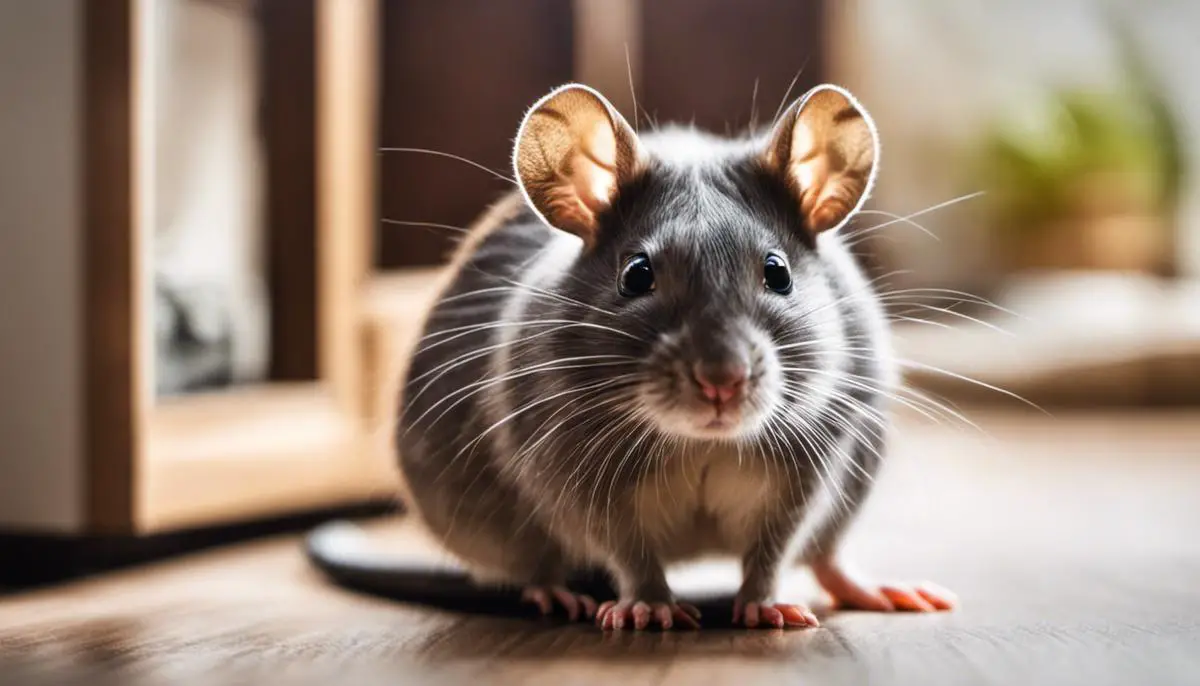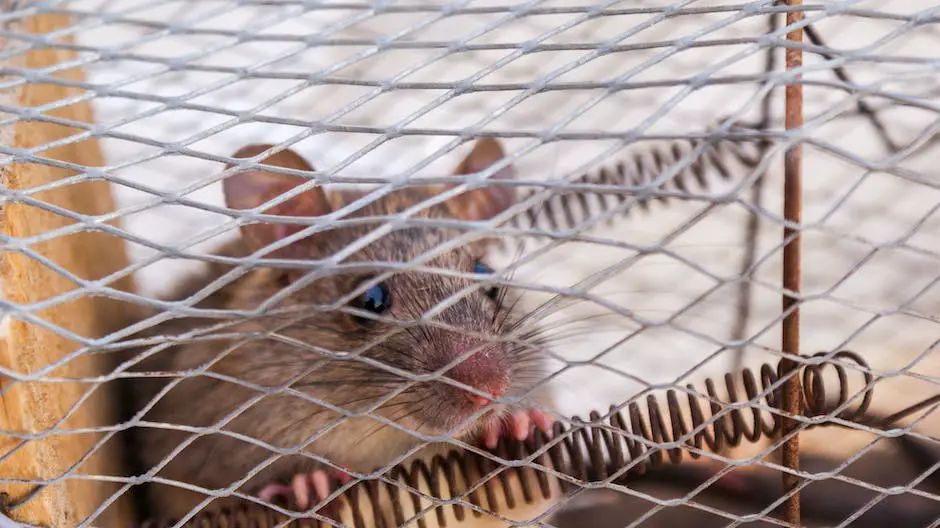Every home, no matter how clean and well-maintained, can become the unfortunate setting for a rodent infestation. These persistent creatures can wreak havoc on your property and pose significant health risks to all inhabitants. With this in consideration, it is paramount to have a comprehensive understanding of rodents, their behavior, and how to control them effectively. This comprehensive guide aims to acquaint you with the integral aspects of rodent behavior, elaborate on the importance of maintaining excellent home sanitation, and delve into the practical techniques of rodent trapping and baiting. With a clear focus on these critical areas, you’ll be empowered to protect your home and family from any potential rodent invasions.
Understanding Rodent Behavior
Unraveling the Mystery of Rodent Behavior for Effective Home Control
Hello there, wonderful parents and homemakers!
There’s something comforting about the warm oasis you have crafted for your family, right? Your home – your personal, cozy sanctuary that is filled with everything you love and cherish. But, let’s be honest, our home sweet homes are often prone to uninvited, undesirable guests, and no, we’re not talking about overly enthusiastic neighbors. Rodents! Those pesky little creatures that love to explore your sanctuary just as much as you do!
Understanding rodent behavior is a game-changer when it comes to keeping them at bay and your home safe. Stick around as we delve into just how this understanding aids in controlling these small furry pests.
Rodents are creatures of habit. They have a remarkable memory not only for navigating their way around but also for recognizing potential dangers. Identifying their habitual routes and frequented areas help in strategizing the placement of traps and baits. Remember, these are exploratory little souls; they love to sniff out new pathways and niches, so closely monitor their movement patterns for effective placement of preventative measures.
Another fascinating trait about these miniature marauders is their affinity for gnawing. They’ll gnaw just about anything! This habit is driven by the need to keep their teeth sharp and short. Seeming small soft spots, cracks, crevices? Time to seal them up! It’s no less than inviting them into your inner sanctum.
Rodents are also remarkably social creatures. They live in large, close-knit families and communicate thoroughly. Hence, once a couple of rodents find a safe, warm spot full of food, it’s very likely that the rest are bound to follow. Keeping the area around the house clean, void of extra food or trash, and sealed is an excellent preventive measure to avoid an extensive invasion.
Let’s not forget their nocturnal nature, which means they are most active during night-time when your household is in the dream world. This behavior draws attention to the importance of night-time preventive measures and monitoring. Evidence of rodent activity, like noises in the walls or signs of gnawed items, are most likely to surface at night.
Understanding these basic behaviors of rodents is instrumental in ensuring that your beloved home remains free of these uninvited guests. Welcome this knowledge as another essential tool in your homemaking kit, because hey, this is just another intricacy of managing a busy, lively, and happy household!

Home Sanitation Measures
Sanitation – Your Sure-Fire Weapon Against a Rodent Invasion
Maintaining an immaculate home isn’t just about reflections off glass tabletops or dust bunnies hiding in the corners. The level of cleanliness in your home can be a determining factor in whether or not you’re playing host to rodents. And while it’s been covered how rodent behavior can influence how they cozy up in our homes, it’s equally vital to understand how proper sanitation practices can keep these uninvited guests at bay.
Let’s start with the basics, food and shelter: two main things that make our homes so appealing to rodents. Keeping our homes clean reduces the availability of these two essentials, making our homes much less suitable for a rodent habitat.
Firstly, it’s all about the food. Rodents have a knack for finding crumbs and leftovers. One could say they’re the world’s tiniest clean-up crew, only they’re not exactly the kind we want. Ensuring the kitchen is clean, food is properly stored in airtight containers, and trash is regularly taken out, helps eliminate this food source. Without easy access to food, our house is less enticing to rodents.
Next, the clutter. A cluttered home is an ideal hiding spot for your tiny unwelcome guests. The less clutter, the fewer hiding spots, making it harder for rodents to comfortably nest. Constant decluttering, frequent dusting, and quick cleanup of spills can significantly reduce potential hiding spaces for these critters.
In addition, good sanitation goes beyond just the interior of the house. Yard care also plays a massive role in deterring rodent infestation. Trimming back overgrown vegetation, maintaining a clean barbecue area, and ensuring trash bins are well sealed can reduce outside attractions for rodents.
Sanitation is also vital in reducing the risk of diseases spread by rodent droppings and urine. Cleaning areas that may have been frequented by rodents with a bleach solution can prevent the spread of harmful pathogens, reducing health risks to your family. It’s important to remember to wear gloves and a mask when cleaning these areas, because rodents can carry harmful diseases like hantavirus and salmonella.
Furthermore, ensuring the house is properly ventilated reduces damp spots which are prime real estate for rodents. Regular checking of plumbing for leaks and making sure dryers, and other appliances are well vented also helps prevent dampness.
In conclusion, excellent sanitation practices are integral to a rodent-free home. They may be small in size, but the problems they can cause are anything but small. As the old saying goes, prevention is better than cure, so ensure your home is spick and span, both indoors and out, to keep these furry invaders out.
Remember, a clean home isn’t just a healthy home, it’s a rodent-free home.

Rodent Trapping and Baiting
Let’s hop on to the next part of our journey through effective home rodent control. It’s wonderful to have a space for our families to grow, to laugh and to love but unwanted furry guests can be quite an intrusion. Fear not! With understanding and simple home adjustments, you can keep pesky rodents at bay. Let’s put the spotlight on trapping techniques and baiting methods, adding more tools to your vibrant and rodent-free family life toolkit!
Trapping techniques are the heart of handling a rodent problem – not the most pleasant task, but crucial. There’s a wide range of rat and mouse traps on the market, but the trick is to know your enemy! Are you dealing with a single rogue mouse or a full-on rat family? Snap traps and live catch traps are an economical and effective solution for tackling smaller infestations or the solo adventurer. Choosing this method contributes to a more humane and non-toxic way of dealing with your rodent issue.
For a larger infestation, electronic traps could be your ally. They’re reusable, easy to clean and highly effective, delivering a swift end to rodents. These traps are often preferred for their clean and hygienic operation – you don’t need to see or touch the rodent. Set them up along the rodent activity areas you’ve identified, ensuring the bait faces the wall as rodents prefer to run along walls.
The baiting technique is equally essential for effective rodent control. Who knew getting rid of rodents could be such an art? Remember, bait is the key to successful trapping, and choosing the right one could make all the difference. Traditional choices like cheese and peanut butter may not always work; you may need to try different foods to entice them. Tiny pieces of hot dog, bacon, or a nesting material like cotton balls could be appealing.
While bait stations can also help in management, they’re typically preferred in outdoor environments as they can tackle a larger rodent population. These contain rodenticide and should be used with caution, especially if there are children or other pets in the household. Always remember to place them in areas with high rodent activity and out of reach of non-target animals and kids.
Glue traps are another multi-use tool in your arsenal but use them wisely. While effective, they can be seen as less-humane compared to other trapping methods. However, if used, ensure they are placed in spots with identified rodent traffic.
Finally, it’s crucial to regularly check and promptly empty your traps to maintain their effectiveness. This, combined with proper cleaning and sanitation, creates a hostile environment for these unwelcome intruders. Implement these techniques, and watch your home shift from inviting to intimidating for any wily rodent.
The family home is a haven of joy, love and warmth. A rodent invasion doesn’t have to dampen that spirit. With diligence, patience, and the right techniques, your home will continue to be a delight and your family safety secured. And as each gorgeous sunrise and adorable toddler giggle reminds us, family time, indeed, is priceless! Roll up those sleeves and embrace the task at hand, ensuring your home remains a vibrant, healthy and rodent-free space for your beloved family. Together, we can build wonderfully resilient homes!

Having evaluated the specifics of rodent behavior, the preventative role of proper sanitation, and the practical application of trapping and baiting techniques, the task of rodent control becomes less daunting. No longer is it a vague, overwhelming menace, but rather an engagement you can approach with a clear mind and a comprehensive plan. The key is in the understanding that successful rodent control is not a singular act, but a continuous process. Infect, it is a lifestyle that integrates knowledge, cleanliness, and efficient use of control methods. With all these tools in your arsenal, you’re well on your way to reclaiming your home from these persistent pests and creating a safer environment for you and your family.








